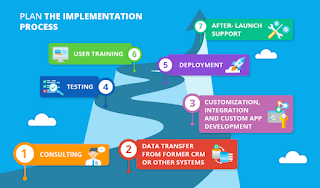LEARNING DESIGN MODEL
ESEB3073 EDUCATIONAL TECHNOLOGY
4.0 Learning Design Model
Addie is an acronym for the five stages of a development process. There are analysis, design, development, implementation, and evaluation. The Addie model relies on each stage being done in the given order but with a focus on reflection. It represents a dynamic, flexible guideline for building effective training and performance support tools.
4.1 Addie Phase 1: Analysis
The analysis phase can be called as the "goal-setting stage" which focuses on the target audience. In this phase, instructors distinguish between what the student already knows and what they should know after completing the course. The program must match the level of skill and intelligence that each student or participant shows. This is mainly to ensure that what they already know won't be duplicated.
4.2 Addie Phase 2: Design
This stage determines all goals, tools to be used to gauge performance, various tests, subject matter analysis, planning, and resources. In the design phase, the focus is on learning objectives, content, subject matter analysis, exercise, lesson planning, assessment instruments used and media selection. This approach in this phase should be systematic with a logical orderly process.
4.3 Addie Phase 3: Development
This stage starts production and testing methodology being used in a project. Which is making use of the data collected from two previous stages, and use this information to create a program that will relay needs to be taught. If the two previous stages required planning and brainstorming, the development stage is all about putting it into action.
4.4 Addie Phase 4: Implementation
This stage reflects the continuous modification of the program to make sure maximum efficiency and positive results are obtained. Here is where they are striving to redesign, update and edit the course in order to ensure it can be delivered effectively.
4.5 Addie Phase 5: Evaluation
This is the stage in which the project is being subjected to meticulous final testing regarding the what, how, why, when of the things that were accomplished of the entire project. This phase can be broken down into two parts, formative and summative. The main goal of the evaluation stage is to determine if goals have been met and to establish what will be required moving forward in order to further the efficiency and success rate.
In conclusion, Addie phase has found wide acceptance and use in education. It is a very useful approach because having stages cleary defined facilitates the implementation of effective training tools.
Blogspot reflection is done by Monica Jee Ai Mei (SW190408645). Currently a Bachelor of Degree in Education student at Unitar International University. The purpose of this blog reflection is to let other bloggers and visitor understand more about education other than just teaching and learning.








Useful information ! Nice !
ReplyDeleteAccurate and interesting idea.
ReplyDeleteGood job
ReplyDeletewow nice work, interesting information
ReplyDelete